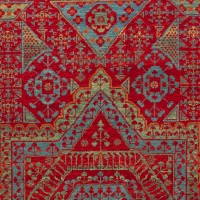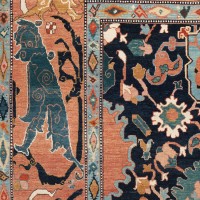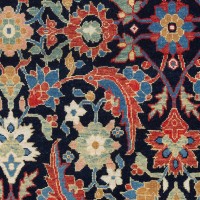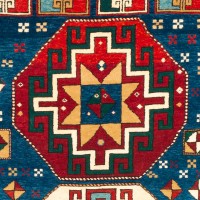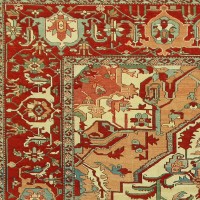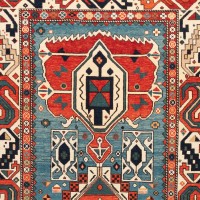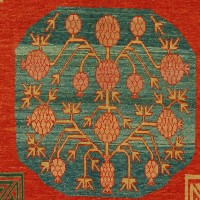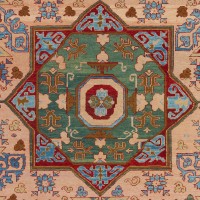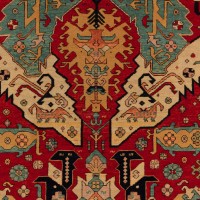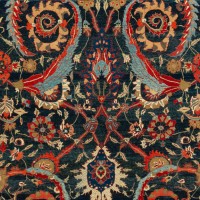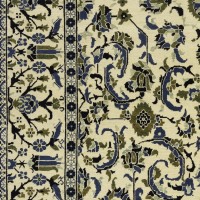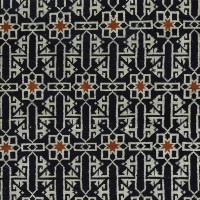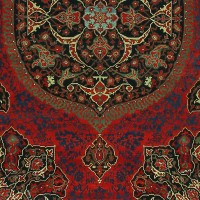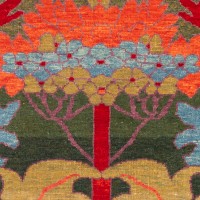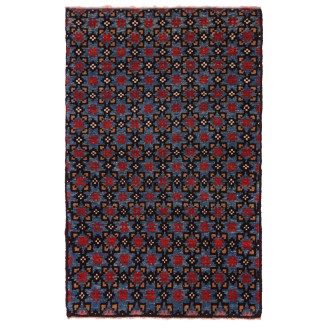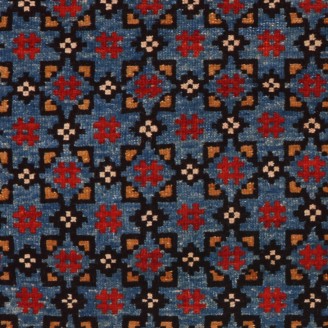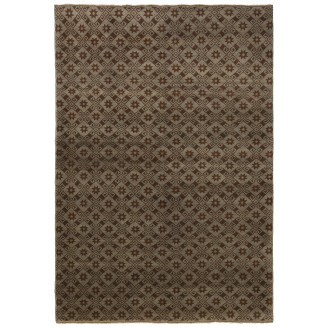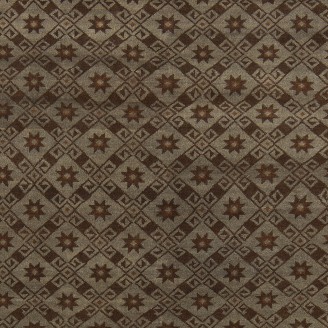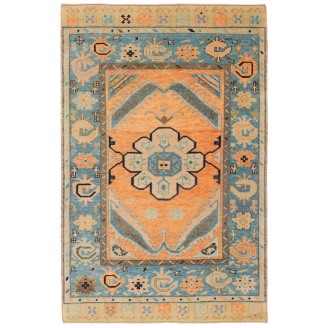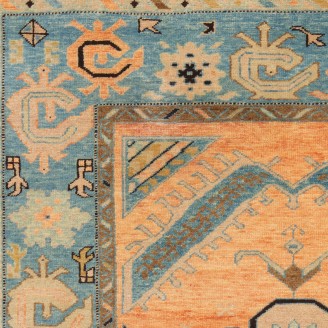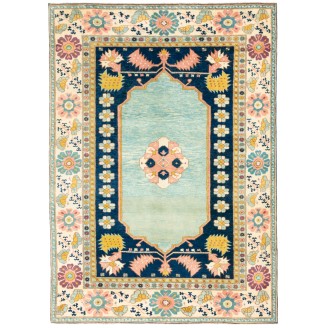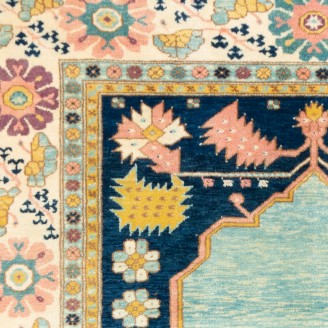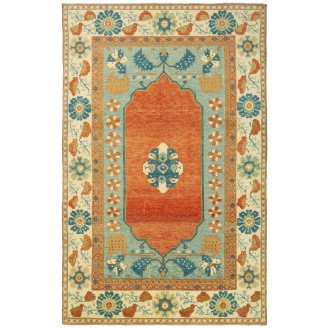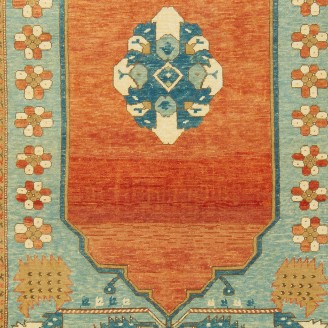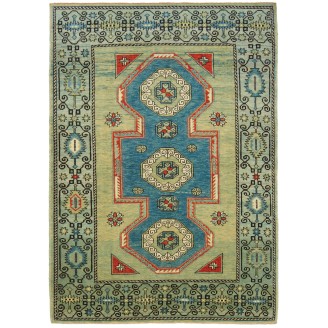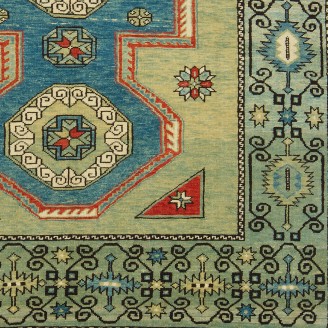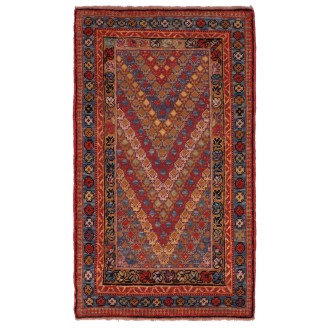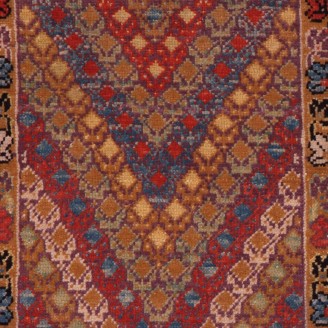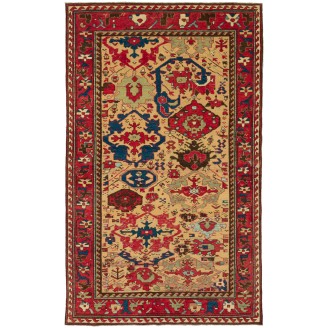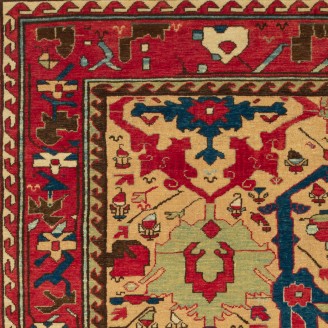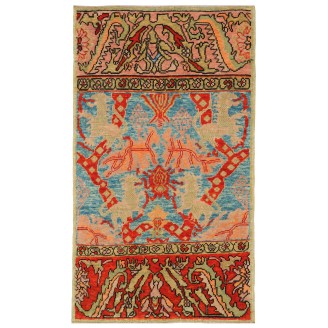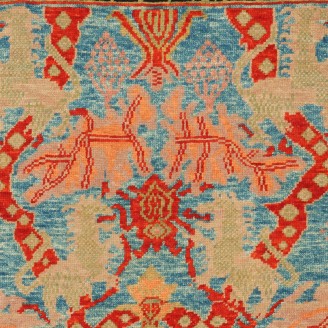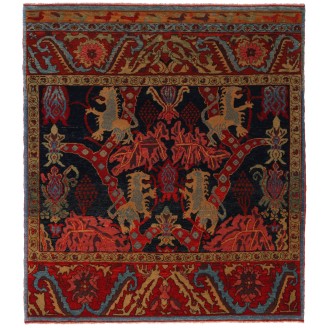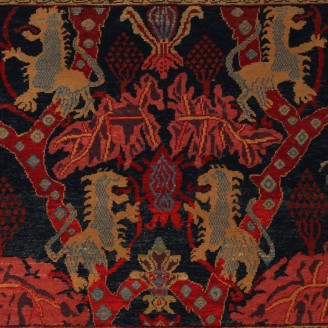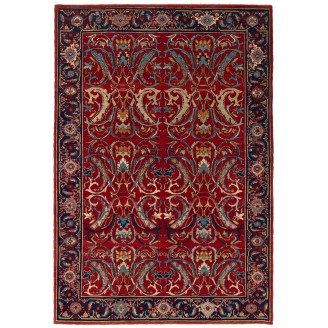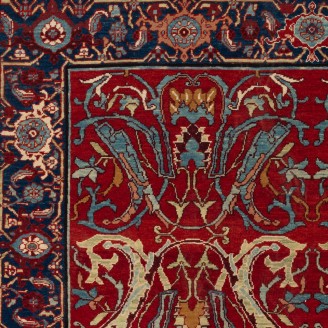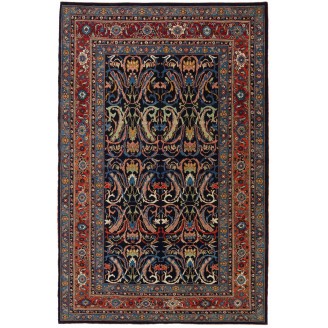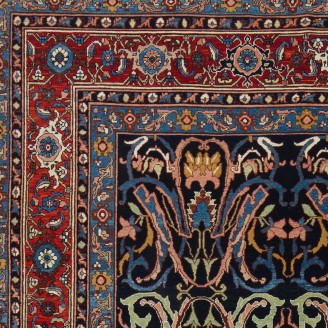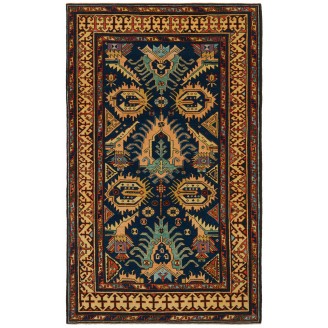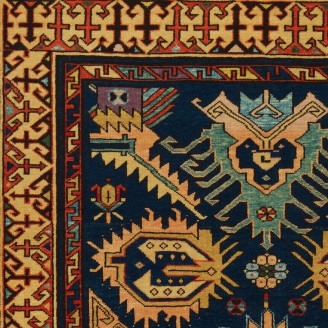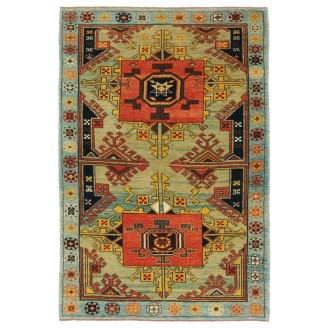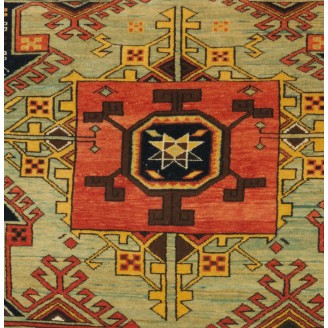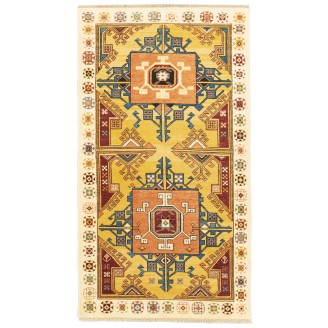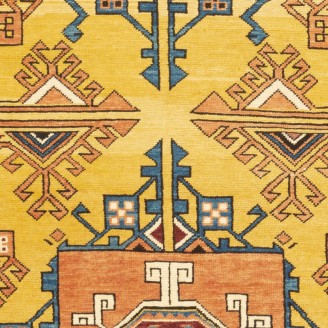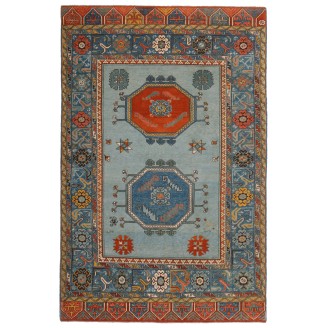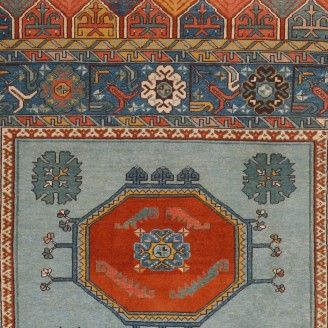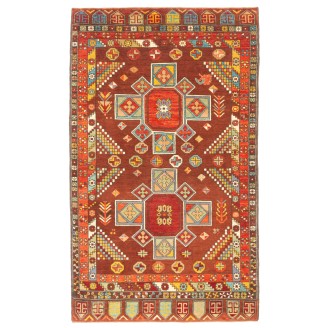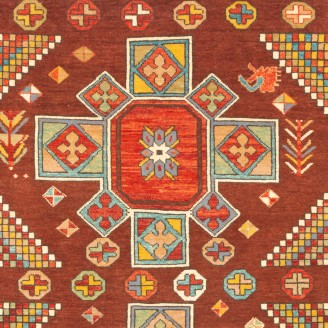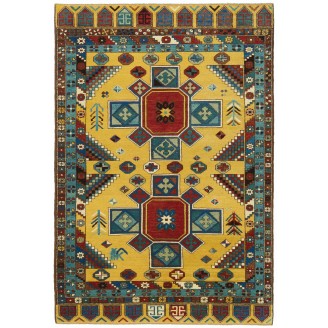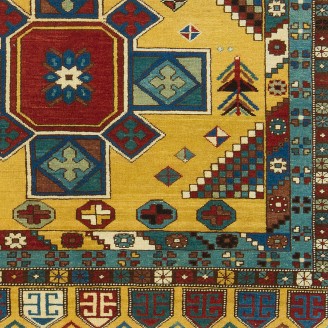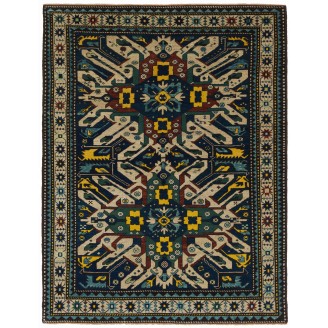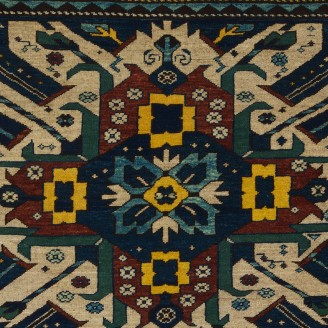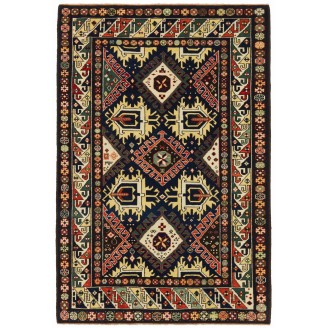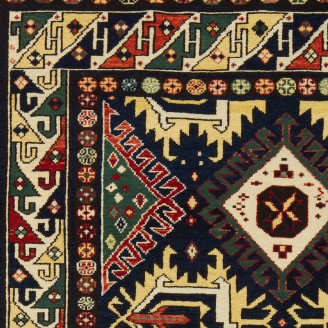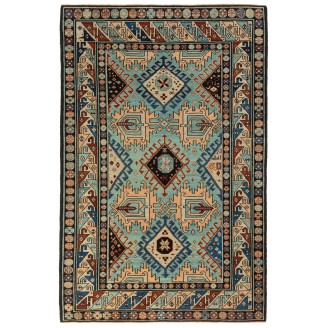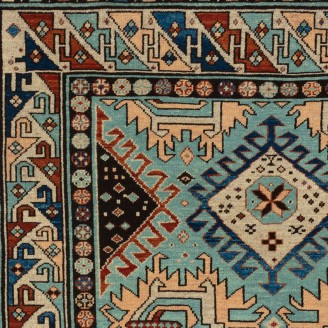Model: ART00254
Dimensions: 1'10" X 2'10"(56cm x 87cm)
The source of carpet comes from the book Turkish Carpets from the 13th - 18th centuries, Ahmet Ertuğ, 1996 pl.16. This 15th-century carpet is from Ulu Mosque, Divrigi Sivas region, central Anatolia. The Seljuk period marks one of the highest points in art and architecture in carpets Anatolia. It is ..
Price:
$825
Ex Tax:$825
Model: ART00347
Dimensions: 5'8" X 8'0"(173cm x 245cm)
The source of carpet comes from the book Orient Stars Collection, Anatolian Tribal Rugs 1050-1750, Michael Franses, Hali Publications Ltd, 2021 fig.24. This 13th-century carpet is from probably the Konya region, central Anatolia, circa 1200-1300 (C 1290-1420). It is exhibited at the Museum of Ethnog..
Price:
$4,200
Ex Tax:$4,200
Model: ART00520
Dimensions: 4'2" X 6'4"(128cm x 195cm)
The source of carpet comes from the book Orient Star - A Carpet Collection, E. Heinrich Kirchheim, Hali Publications Ltd, 1993 nr.178. This is an unusual border drawing, medallion carpet design 16th-century carpet from the Konya region, Central Anatolia area, Turkey. A detail in the border drawing i..
Price:
$2,300
Ex Tax:$2,300
Model: ART00318
Dimensions: 5'8" X 8'0"(175cm x 244cm)
The source of the rug comes from the book Orient Star - A Carpet Collection, E. Heinrich Kirchheim, Hali Publications Ltd, 1993 nr.166. This is similar to Transylvanian carpets designed by 18th-century rugs from West Turkey. This rug has blue corner spandrels with two strongly serrated leaves and ha..
Price:
$4,800
Ex Tax:$4,800
Model: ART00414
Dimensions: 5'11" X 9'1"(181cm x 279cm)
The source of the rug comes from the book Orient Star - A Carpet Collection, E. Heinrich Kirchheim, Hali Publications Ltd, 1993 nr.166. This is similar to Transylvanian carpets designed by an 18th-century rug from West Turkey. This rug has blue corner spandrels with two strongly serrated leaves and ..
Price:
$5,800
Ex Tax:$5,800
Model: ART00334
Dimensions: 5'1" X 7'1"(156cm x 218cm)
The source of carpet comes from the book Orient Star - A Carpet Collection, E. Heinrich Kirchheim, Hali Publications Ltd, 1993 nr.159. The field drawing is gardens with a pond designed 16th-century rug from Konya, Central Anatolia area, Turkey. It's the so-called 'Bellini Carpet' due to the similari..
Price:
$3,400
Ex Tax:$3,400
Model: ART00205
Dimensions: 1'9" X 3'0"(55cm x 93cm)
This small piece exhibits a forceful design on a small scale in a small area. These kinds of small Turkish yastiks or mats are found which contain an extraordinary amount of power within a very small space. There are diagonal ascending rows of flowers covering the field. Even though the central moti..
Price:
$825
Ex Tax:$825
Model: ART00563
Dimensions: 4'10" X 7'11"(149cm x 243cm)
The design source of the rug comes from the book Orient Star – A Carpet Collection, E. Heinrich Kirchheim, Hali Publications Ltd, 1993 nr.28. This is a Harshang design rug with palmettes from the early 19th century, Azerbaijan region, Eastern Caucasus or Northwest Persia area. A particular descendan..
Price:
$6,200
Ex Tax:$6,200
Model: ART00069
Dimensions: 1'9" X 3'1"(55cm x 94cm)
This offset pattern is composed of leaves and lotus palmettes filling the various compartments against the imposing ground, while heraldic lions rear across the strapwork borders. One has the impression that it is only part of a larger scheme designed 19th-century rug from Bidjar region, Eastern Kur..
Price:
$725
Ex Tax:$725
Model: ART00249
Dimensions: 3'7" X 4'0"(111cm x 123cm)
This offset pattern is composed of leaves and lotus palmettes filling the various compartments against the imposing ground, while heraldic lions rear across the strapwork borders. One has the impression that it is only part of a larger scheme designed 19th-century rug from Bidjar region, Eastern Kur..
Price:
$2,700
Ex Tax:$2,700
Model: ART00583
Dimensions: 5'0" X 7'3"(154cm x 222cm)
This is a repeat of large sweeping arabesques in muted colors adorning the red field rug designed in the early 20th century that originates from the Bidjar region in northwestern Iran. Bidjar rugs, in general, are renowned for their exceptional durability and high-quality craftsmanship. The Arabesqu..
Price:
$6,850
Ex Tax:$6,850
Model: ART00539
Dimensions: 7'8" X 11'9"(234cm x 359cm)
This is a repeat of large sweeping arabesques in muted colors adorning the midnight blue field rug designed in the early 20th century that originates from the Bidjar region in northwestern Iran. Bidjar rugs, in general, are renowned for their exceptional durability and high-quality craftsmanship. Th..
Price:
$22,000
Ex Tax:$22,000
Model: ART00449
Dimensions: 4'8" X 7'7"(144cm x 233cm)
This is a Bidjov Kazak rug, designed late 19th century, is a type of handwoven rug that originated from the Caucasus region, specifically from the town of Bidjov, a few miles north of Marasali. As with many place names, the attribution to Bidjov is by no means certain; this group as a whole seems cl..
Price:
$3,790
Ex Tax:$3,790
Model: ART00379
Dimensions: 4'0" X 6'0"(122cm x 183cm)
The source of carpet comes from the book Orient Star - A Carpet Collection, E. Heinrich Kirchheim, Hali Publications Ltd, 1993 nr.135. This exceptionally elegant, large medallion-pattern design 17th-century carpet from the Konya region, Central Anatolia area of Turkey. Vine scrolls surrounding the b..
Price:
$2,700
Ex Tax:$2,700
Model: ART00300
Dimensions: 4'0" X 7'3"(124cm x 221cm)
The source of carpet comes from the book Orient Star - A Carpet Collection, E. Heinrich Kirchheim, Hali Publications Ltd, 1993 nr.135. This exceptionally elegant, large medallion-pattern design 17th-century carpet from the Konya region, Central Anatolia area of Turkey. Vine scrolls surrounding the b..
Price:
$3,300
Ex Tax:$3,300
Model: ART00398
Dimensions: 5'4" X 7'11"(163cm x 243cm)
This is a dual medallion as the main element of the design of 18th-century carpet from the Konya region, Central Anatolia area of Turkey. Rugs of this type, using two medallions, appear frequently in 15th-century paintings of both the Venetian and the Flemish schools. This pattern tradition survived..
Price:
$4,500
Ex Tax:$4,500
Model: ART00356
Dimensions: 4'3" X 7'0"(130cm x 215cm)
This is a dual medallion as the main element of the design of 18th-century carpet from the Konya region, Central Anatolia area of Turkey. Rugs of this type, using two medallions, appear frequently in 15th-century paintings of both the Venetian and the Flemish schools. This pattern tradition survived..
Price:
$3,200
Ex Tax:$3,200
Model: ART00365
Dimensions: 4'2" X 6'2"(127cm x 188cm)
This is a dual medallion as the main element of the design of 18th-century carpet from the Konya region, Central Anatolia area of Turkey. Rugs of this type, using two medallions, appear frequently in 15th-century paintings of both the Venetian and the Flemish schools. This pattern tradition survived..
Price:
$2,700
Ex Tax:$2,700
Model: ART00535
Dimensions: 4'9" X 6'1"(145cm x 186cm)
The design source of the rug comes from the book Tapis du Caucase - Rugs of the Caucasus, Ian Bennett & Aziz Bassoul, The Nicholas Sursock Museum, Beirut, Lebanon 2003, nr.29 and Oriental Rugs Volume 1 Caucasian, Ian Bennett, Oriental Textile Press, Aberdeen 1993, nr.93 and Caucasian Carpets, E...
Price:
$3,600
Ex Tax:$3,600
Model: ART00483
Dimensions: 4'2" X 6'3"(128cm x 191cm)
This is a Derbend Kazak rug also known as Daghestan rug, designed late 19th century, is a type of handwoven rug that originate from the Caucasus region, specifically from the town of Derbend (also spelled as Derbent) in modern-day Dagestan, Russia. Derbend rugs have a rich history that dates back ce..
Price:
$2,750
Ex Tax:$2,750
Model: ART00580
Dimensions: 4'3" X 6'3"(132cm x 192cm)
This is a Derbend Kazak rug also known as Daghestan rug, designed late 19th century, is a type of handwoven rug that originate from the Caucasus region, specifically from the town of Derbend (also spelled as Derbent) in modern-day Dagestan, Russia. Derbend rugs have a rich history that dates back ce..
Price:
$2,970
Ex Tax:$2,970
